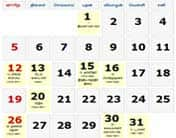

There are more measuring tools at my disposal than I know what to do with – short rulers, long rulers, tape measures, t-squares, combination squares, framing squares, and a bunch of specialty tools – but one stands above the rest as my all-time favorite: my Mitutoyo vernier caliper (model 530-312).
Don’t get me wrong, although I prefer to use vernier calipers as much as I can, I will still reach for a digital caliper when I need a quick and effortless measurement. It’s all about using the best tool for the job.

Calipers are available in a range of sizes, and I opted for Mitutoyo’s 6-inch model, the smallest typically available, because of its affordable price and the understanding that it could handle most of my precision measurement needs. There’s no need for something larger, at least not given the size of the parts I usually work with.

Calipers typically have jaws for making outside measurements.

Most if not all standard calipers also have smaller jaws for taking inside measurements.

Calipers also allow for height and depth measurements. This feature is normally used to measure the depths of holes and other sub-surface heights. You cannot see it in the above photos, but this small stem is attached to the sliding scale and movable jaws, meaning that it extends outwards whenever you take any measurements.
Benefits of a Vernier Scale
I could easily bore you with a lengthy discussion of vernier vs. dial vs. digital calipers, but I won’t. For the time being, let’s just focus on the merits of this vernier caliper.
- Simple construction (easy to clean, less things to break)
- No batteries to replace
- Less worrying about exposure to solvents and chemicals
- More affordable
- Reasonably high precision (0.001-inches/0.02mm graduations)
The biggest downside to vernier calipers is that they require a bit of math to arrive at a full measurement. Although, a little grade-school-level math is good in today’s age where most of us rely on calculators for all the most basic calculations.
At times it can be difficult to read vernier calipers, leading to a small uncertainty in the exact value of a measurement. Realistically, we’re talking about tiny differences, such as say 1.782″ vs. 1.783″ or 37.64 mm vs. 37.66 mm. When I find myself stressing over a judgement call I know it’s time to switch to a digital caliper or micrometer.
Summary
There are many high quality calipers on the market, but this Mitutoyo offers everything I need. It is fairly affordable (less than $85 via Enco), and has proven itself to be highly accurate and reliable over the years. Its scale and movable jaws slide easily and all markings are well defined and easy to read. After five years I have zero regrets.
I reach for micrometers when I need more precise measurements, and digital calipers when I need quicker measurements. For projects where I can take the time to enjoy my work, this is what I reach for.

 Time in Colombo
Time in Colombo 










































No comments:
Post a Comment